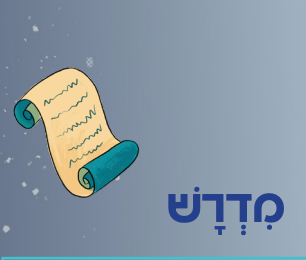Ilustration Credit: Elad Lifshitz, Dov Abramson Studio

Midrash מִדְרָשׁ
The Torah says the אָרוֹן (aron, ark) was supposed to be covered in gold מִבַּיִת וּמִחוּץ (me-bayit u’me-hutz, inside and outside). What could this be teaching us?
״מִבַּיִת וּמִחוּץ״ -
אָמַר רָבָא: כׇּל תַּלְמִיד חָכָם שֶׁאֵין תּוֹכוֹ כְּבָרוֹ — אֵינוֹ תַּלְמִיד חָכָם.
“From inside and from outside”-
Rava said: Any Torah scholar whose inside is not the same as their outside is not actually a Torah scholar.
Rava believes the aron can teach us about something called “integrity.” That’s when a person really believes or means on the inside all the good things they say or show in their outside behavior. People who have integrity are honest—they don’t try to trick people. They also really believe in what’s right, so they’ll do the right thing even if no one is looking (and not just because they hope someone on the outside will notice). Rava says it’s only possible to be a Torah scholar if you have integrity.
- Can you think of examples of people in your life who have a lot of integrity? What does it feel like to interact with someone like this? Why is this quality so important for Torah scholars?
- When can it be hard to be honest? What would you tell someone who’s having a hard time with that?
- Do you think it’s easier to be good, generous, or kind on the inside, or on the outside? Why?
- Have you ever done the right thing even if no one was looking? What did that feel like? What is it like to be around people who act this way?
-------------------
-------------------





